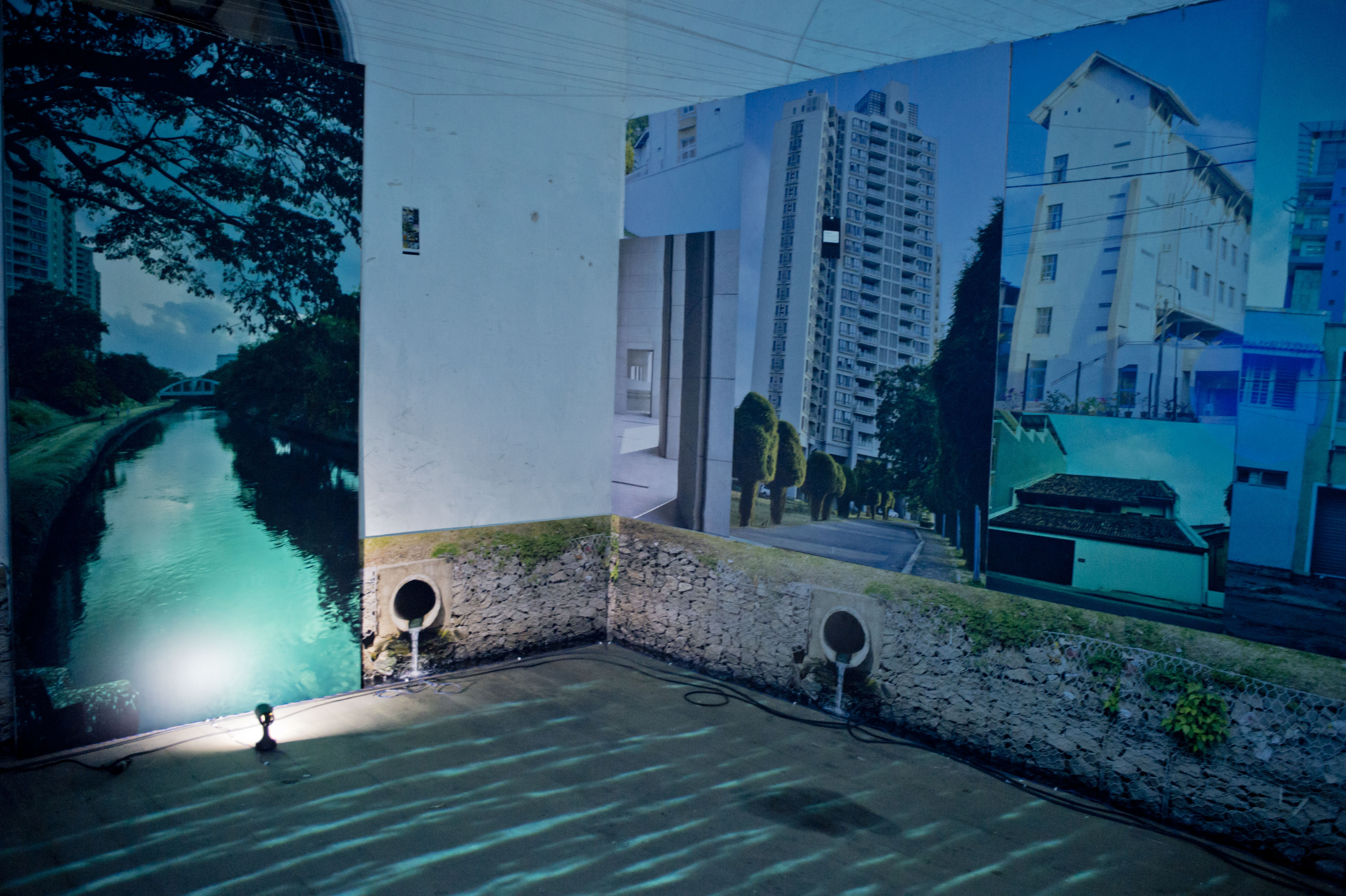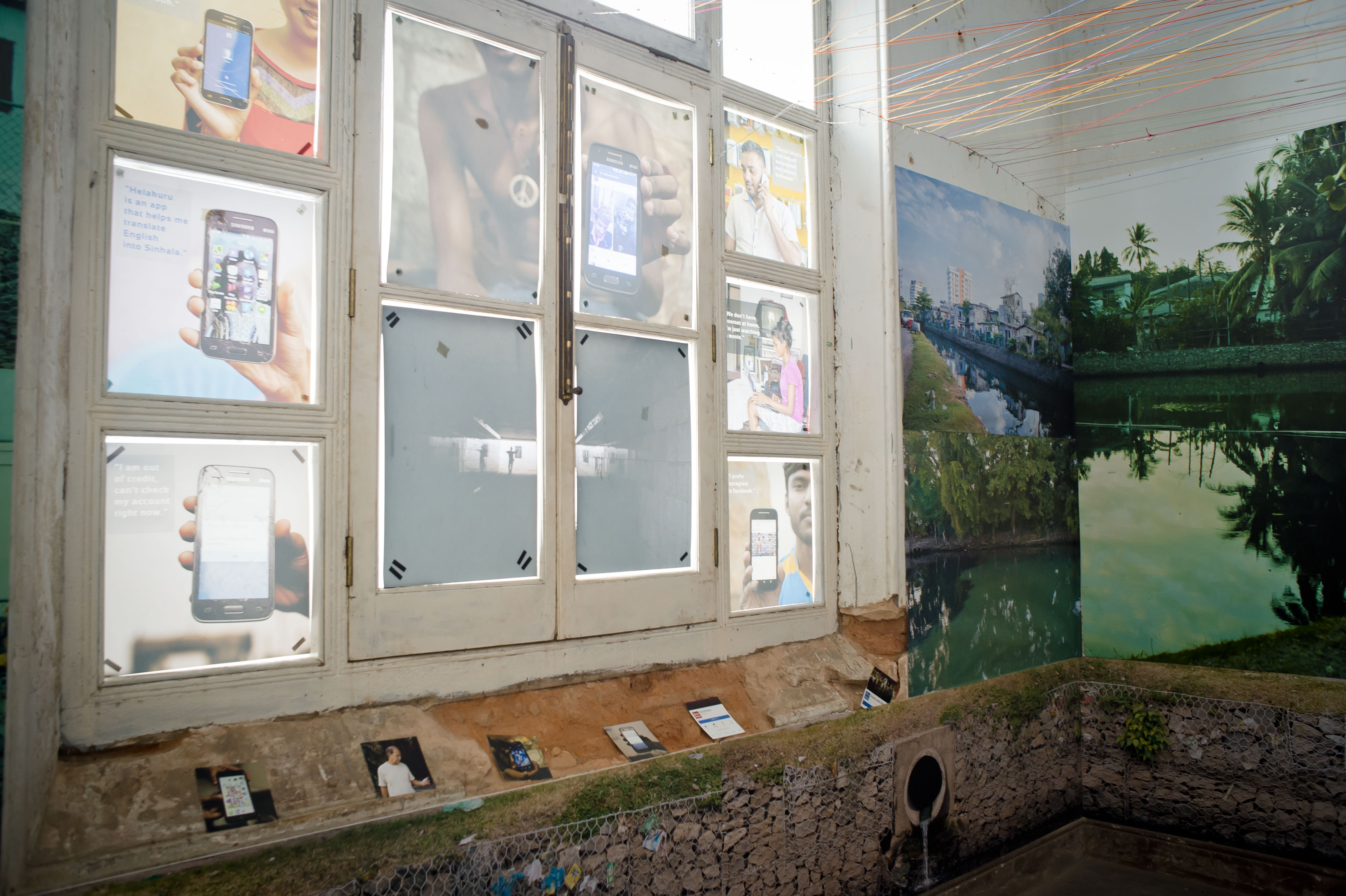In 2016, I conceptualized an installation titled ‘The Colombo Project,’ for Cinnamon Colomboscope, an annual contemporary and multi-disciplinary arts festival in Sri Lanka. Using both photography and film, the installation tried to capture a vision of the city which holds within itself a potential for ethnic and religious harmony through its built environment and technological advancement. ‘The Colombo Project’ was invited to be exhibited at Serendipity Arts Festival in Goa (2019) and at the Mittal South Asia Institute at Harvard University (2022).

The installation was based on the neighbourhood around the Kirulapone Canal, an area that houses ethnically and socioeconomically diverse communities of Colombo. Having worked and studied in the area, my own relationship with the neighbourhood spans two decades. The idea of the installation was to enable visitors to understand how our built and virtual environments impacted our interactions with one another. Our interactions are key to formulating perceptions of each other, and as Colombo expands both vertically and horizontally, embracing the aesthetics and technology of a ‘modern’ and ‘global’ city, what could these changes entail for social cohesion and social mobility?

With journalist Megara Tegal, I conducted several surveys and interviews with residents to understand their perception of other ethnic/religious communities and how factors such as social media/physical interaction could influence these. Particular attention was given to how the built environment could impact these interactions.
The places we covered included Havelock City (upscale new apartment complex built on the former Wellawatte Spinning & Weaving Mills), Thalakotuwa Gardens, Park Road, Sri Siddhartha Road and Mayura Place. The erstwhile residents of the land which is now Havelock City are housed at Lakmuthu Sevana (government apartment complex) at Mayura Place. They are mostly descendants of the mill workers from India, and formerly lived in tenement housing.



The exhibition was held at the Old General Post office, and in the installation, the area around the Kirulapone Canal was recreated through photography, film and light projections to give visitors an experience of the the way in which its inhabitants interacted with one another.



Physical interaction with residents was higher where the built environment was not walled, particularly down Sri Siddhartha Road where we conducted several face to face interviews with residents. However as we moved to Havelock City, Park Road and Thalakotuwa Gardens, our physical access to the residents was restricted and we interacted primarily through email, whatsapp or facebook. This was demonstrated in the installation through threads. Residents of Lakmuthu Sevana said that after they moved to the apartment complex from their tenement housing, physical interactions with their neighbours was less.
Coloured threads = Physical Interaction
Copper threads = Digital Interaction



One of most recognizable and unique features of this area is the proximity of four different places of worship. Mayura Place is lined by a Catholic church, a mosque and a Hindu temple and a Buddhist monument. Mayura Place was often cited as a place of communal and religious harmony during our surveys and interviews.
For the installation, Mayura Place provided a shared shared sacred place which brought people together. An added feature was the ‘raft’ which was a common area created at the intersection of the ‘L’ corridor where visitors were drawn in by the placement of a tv screen which showed video interviews of residents. The interviewees explored relationships with their neighbours and how they used social media. For many, social media was a platform to start rent free online businesses and interact with those outside their immediate social circles. Cushions and cooling fans were placed strategically in order to ensure people spent time on the raft and interacted with other visitors, often strangers.






In a country fraught with ethnic and class tensions, the most recent being in March 2018, when the government launched its social media ban after anti-Muslim riots took place, what is the role of the built environment in providing physical security, helping overcome political agendas and empowering people? This installation invites people to create common spaces and embrace interactions that will help people overcome their physical/virtual boundaries with one another.
Update: April 2019 saw Sri Lanka experience devastating terrorist attacks in the Easter Sunday Bombings which targeted churches and hotels. The attacks and the ensuing backlash was compounded by online hate speech. Ideas for physical places for meaningful interactions between communities is often brought up in reconciliation discussions.









